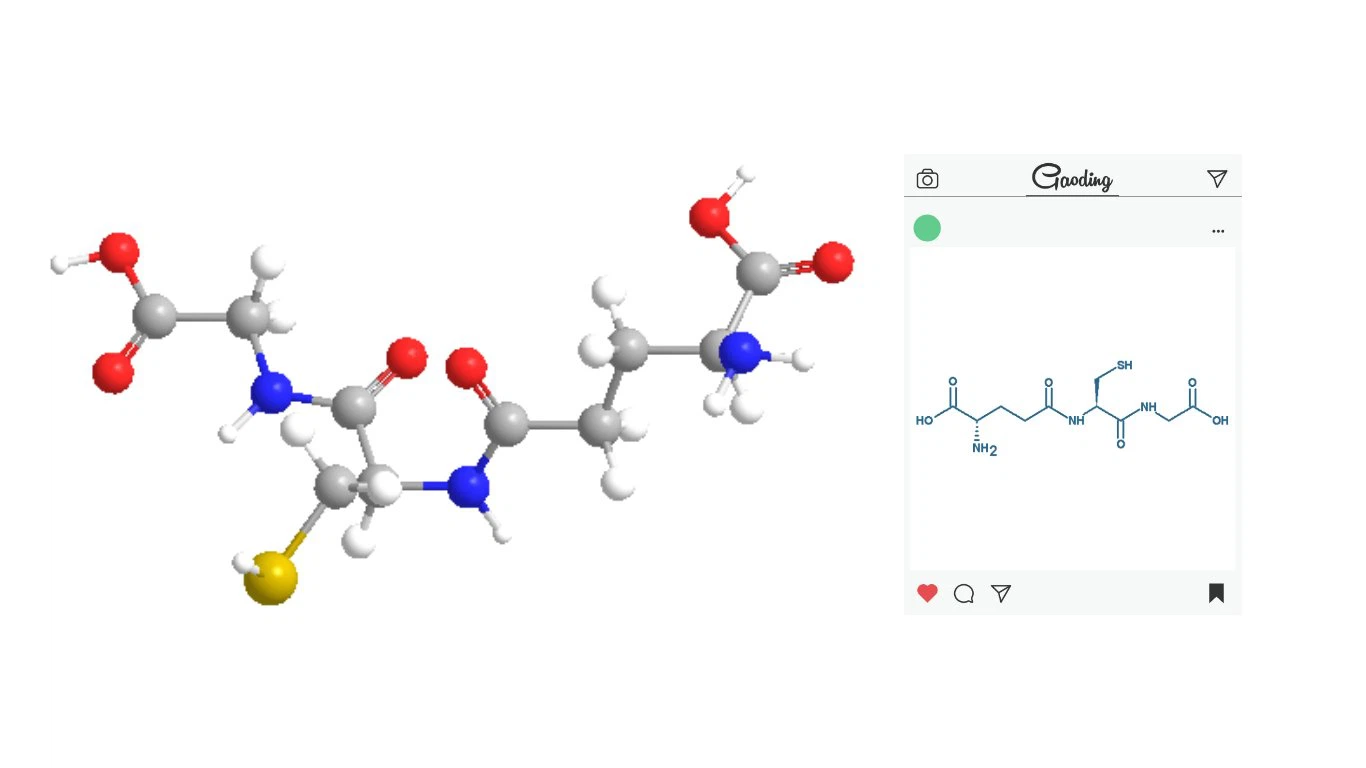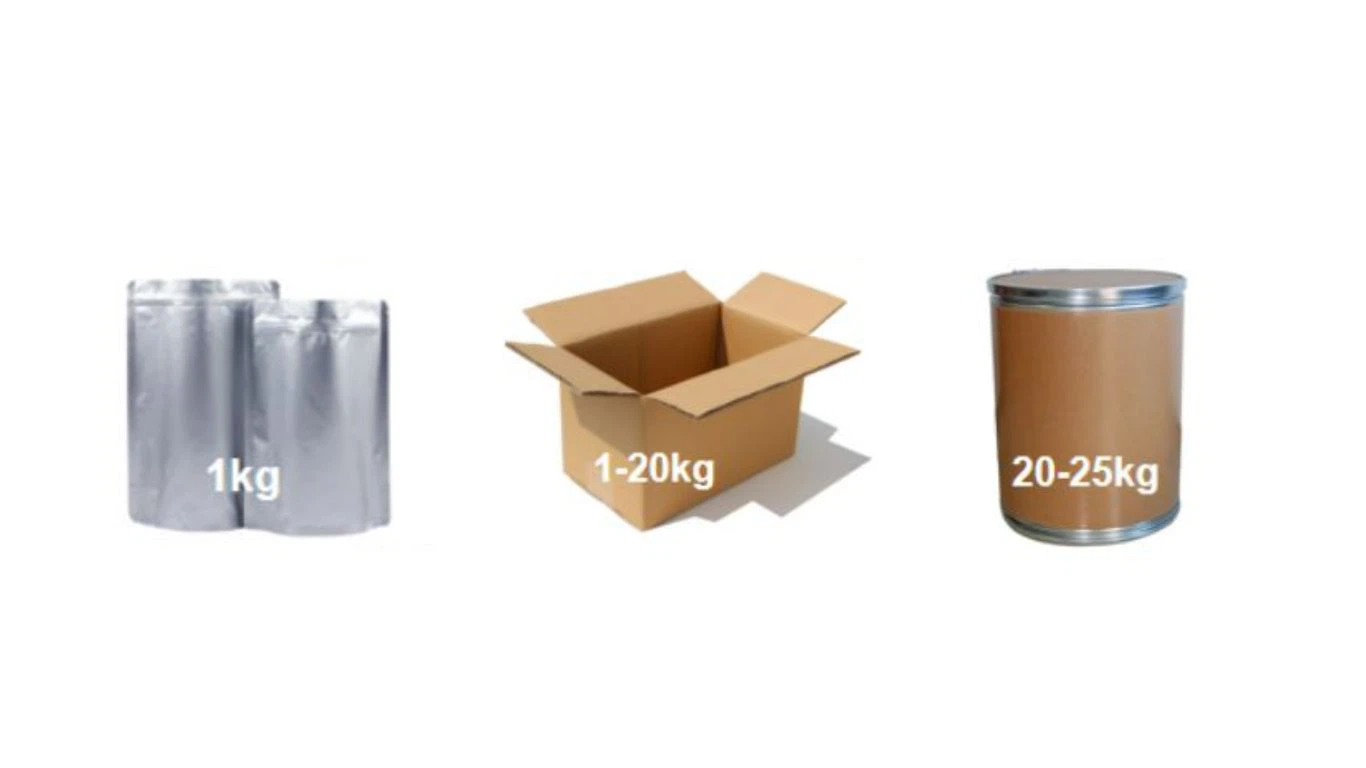

Description
CAS:70-18-8;Assay:99% min
CAS NO.:70-18-8
Brand:GSHWORLD
Glutathione bulk powder raw material - NMN suppliers & manufacturers in China.
Many enzymes in the human body use sulfhydryl groups as active groups. The sulfhydryl groups contained in glutathione are cell protective agents, play an antioxidant role in cells, and participate in neutralizing oxygen free radicals. In view of the important physiological functions of glutathione in the human body, this substance also plays a very important role in the clinical research and treatment of some diseases.

L-Glutathione Reduced(C10H17N3O6S) | |
CAS | 70-18-8 |
Appearance | White or almost white powder |
Assay | 99% min |
Chlorides | Not more than 200 ppm |
Sulfates | Not more than 300 ppm |
Ammonium | Not more than 200 ppm |
Iron | Not more than 10 ppm |
Arsenic | Not more than 2 ppm |
Heavy metals | Not more than 10 ppm |
Cadmium (Cd) | Not more than 1 ppm |
Lead (Pb) | Not more than 3 ppm |
Mercury (Hg) | Not more than 1 ppm |
Sulfated ash | Not more than 0.1% |
Loss on drying | Not more than 0.5% |
Shelf Life | Two years when properly stored. |
Cystic fibrosis (CF) is a genetic disorder that affects more than 250,000 children worldwide. The severe pulmonary dysfunction in this disease is attributed to alterations in an ion transporter, CF transmembrane conductance regulator (CFTR). Stealth mutations make the channel dysfunctional or even disappear. CFTR is an organic anion efflux channel that maintains homeostasis of intracellular ions including sodium, chloride, and GSH. Normal levels of GSH in lung epithelial lining fluid (ELF) are 150 times higher than in other tissues, where GSH acts as an antioxidant that protects tissues from inhaled toxins. But the presence of GSH in the ELF also provides a system of sensitive elements for maintaining surfactant production and is also a trigger for inflammation. CF patients are characterized by a progressive deficiency of systemic GSH over time. Intracellular GSH deficiency is associated with increased transcription of NFkB, which is involved in the regulation of inflammatory factors. Therefore, low levels of GSH can cause inflammation (one of the characteristics of CF), and oxidative stress can also cause damage to cell membranes, intracellular proteins and DNA.
Adding complexity to the disease is the expression of GSTS, especially GSTM, in CF patients. GSTM1 plays an important role in the detoxification of hydroperoxides. Furthermore, GSTM1 is a negative regulator of ASK1, a kinase involved in the apoptotic pathway. CF patients have a weaker immune response, which is also associated with decreased GSH levels. Decreased GSH levels lead to premature apoptosis of macrophages and neutrophils in the lungs.
Some treatment regimens for CF aim to repair GSH levels, especially in ELF. Since GSH deficiency is primarily due to aberrations in efflux rather than synthesis, adding exogenous GSH is worthwhile. Buhl R et al tried 3 ex situ strategies to increase GSH, including intravenous, oral or inhalation, and inhalation seems to be more worthy of promotion considering stability and absorption efficiency. Some researchers implemented 600mg GSH spray treatment on CF patients, and the results showed that GSH levels in ELF increased. The study provides a platform for further clinical trials.



PREVIOUS:Lipoic acid pale yellow powder
+86-755-23577295
+86 18718790084
Room 832, Building 12, Shenzhen Bay Science and Technology Ecological Park, Yuehai Street, Nanshan District, Shenzhen China